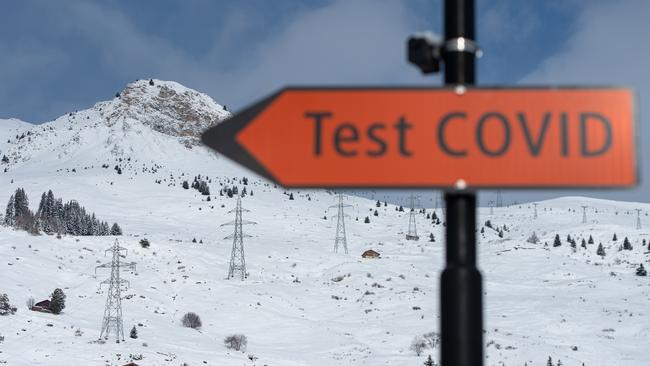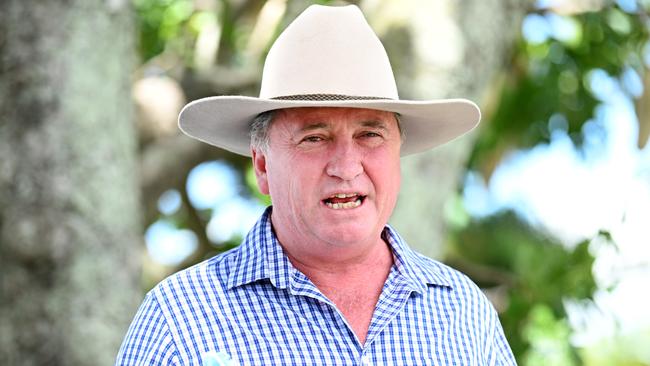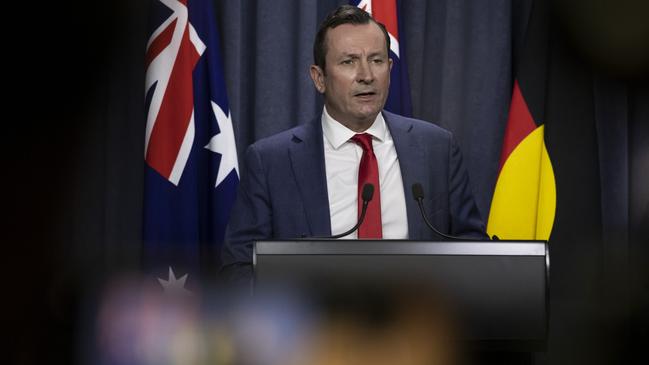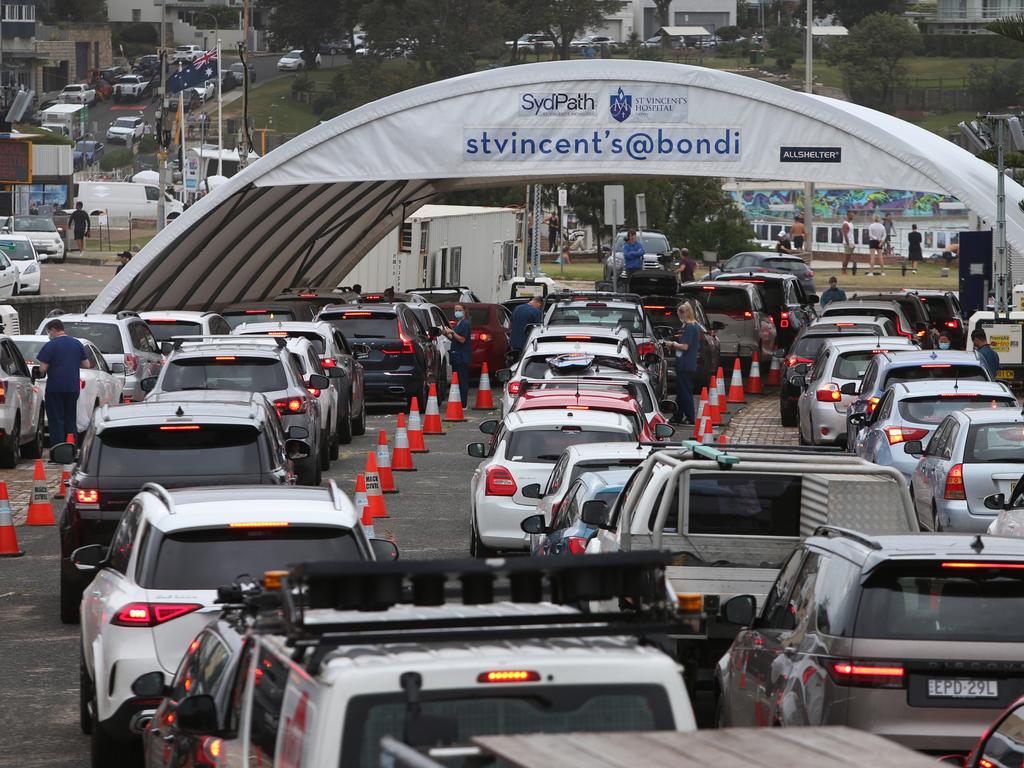
It is little wonder Deputy PM Barnaby Joyce was hammered for telling the ABC’s new RN Breakfast host Patricia Karvelas on her first day in the job on January 24 that no one was dying with Omicron.
Karvelas, rightly, pulled him up and he corrected his error. The Twitter pile-on exploded.
Yet Joyce had a point, even if some enmeshed in Covid catastrophism may struggle to see it.
Separating domestic pandemic numbers out to before and after Omicron reveals some interesting facts about the variant and its predecessors here.
On December 1, there had been a reported 211,654 cases and 2011 deaths since early 2020.
By Australia Day last week, case numbers had blown out to 2.29 million and deaths stood at 3230. So, an extra two million cases and 1200 more deaths, all compressed into less than two months.
As doctors have noted, it is likely many more people during the Omicron wave have been infected than the reported total. Most will have been people who remained asymptomatic.
Yet even using the official federal department of heath total, the fatality rate stands at 0.14 per cent across the pandemic. Over the past two months that rate is about 0.06 per cent.
The US Centers for Disease Control says flu deaths over 20 years to 2019 averaged 1.8 per 100,000. In a bad season, flu can kill more than 1000 people in Australia, which was about the annual Covid fatality total pre-Omicron.
The danger for the media in over-hyping Omicron risks? So many people have now had Omicron that Australians are waking up: this is not the catastrophe many journalists are pretending. Many of us have seen family members and friends test positive only to be fit and well again a day or two later. It might not be the vibe in newsrooms, but at the dining tables in country NSW where I spent the silly season, it is what people are saying.

While the sheer numbers of cases have produced high absolute numbers of hospitalisations and deaths compared with previous waves of the virus, there has been far too little media focus on the good news: that for healthy vaccinated people, especially those who have had a third booster shot, Omicron is not much of a threat.
How then to judge the extreme hostility to Morrison of “lockdown luvvie” journalists who insist he is personally responsible for a “let it rip” strategy that is destroying the nation’s health system and needlessly killing Australians? Sure, as this column remarked last week, the federal government has made mistakes and been slow to learn some lessons, especially in aged care.
But opening up after reaching double dose vaccination targets of 80 per cent was part of a national plan that state and territory governments agreed to with the federal government. The Labor states of Queensland and Victoria have stuck with the plan and opened at a similar pace to the Coalition states of NSW and South Australia.
Many journalists who had tweeted support for every Covid restriction, however ill-advised, by the Andrews and Palaszczuk governments during 2020 and 2021, have avoided highlighting the high infection numbers, hospitalisations and deaths in Victoria and Queensland since the states’ reopening. Only Morrison is blamed.
Yet while turning a blind eye to infection rises in the two Labor states that have opened, they continue to heap praise on WA Labor leader Mark McGowan for keeping his state shut to protect his citizens.
This is blatant politicisation of the pandemic by journalists of the left. It is no different from the politicisation of Covid by some medical professionals who just bat for team Labor. Every journalist and every doctor had known for months the national agreement was to open up and learn to live with Covid.
The truth is, despite obvious mistakes, Australia has done better than most of the world. We have moved up the Worldometer global table since Omicron and last Friday sat at 29 because case numbers have risen tenfold. But the nations near us on the table in total infection numbers all have much higher death totals than the 3000-odd recorded in Australia.
Switzerland, Japan, Portugal and Israel have similar total cases to Australia, but deaths at 12,751, 18,559, 19,703 and 8513 respectively. On the key deaths per million indicator, we sat at 128, Switzerland at 1457, Japan at 147, Portugal at 1941 and Israel at 913.

Yet on Ten’s The Project and on much of the ABC, Australia’s pandemic performance is reported as a disaster. High-profile journalists continue to advocate for harsher restrictions.
No one knows how the pandemic will pan out, but as this column suggested before Christmas, we may end up thinking Omicron was a blessing that, together with third vaccine doses, improved national immunity. Remaining closed forever will not prevent the disease eventually hitting, as Hong Kong, and to a lesser extent Taiwan, now seem to be finding out.
Nick Coatsworth, infectious diseases specialist and former federal deputy chief medical officer, made the sensible point on Twitter on January 21: “Delay WA opening until 80 per cent boosted, which will occur some time around May, to coincide with the winter flu season, which may well be worse this season due to lack of, you guessed it, immunity from recent infection. Courageous indeed.”
Journalists have known for at least 18 months that most people recover from Covid and those who don’t are overwhelmingly the elderly and those with severe comorbidities. Such deaths are a tragedy but the fact remains the average age of all Covid deaths here before Omicron was slightly higher than average life expectancy of 82.9 years.
Australia reports an average of 160,000 deaths a year, or about 440 a day. The main killers remain heart disease, stroke and cancer. So since the first Covid case here, about 320,000 Australians have died over two years but only about 3200 with (rather than necessarily from) Covid.
The media focus on Covid does not help the lives of the vast majority of Australians for whom better diets, more exercise and less alcohol and tobacco would be the most beneficial changes they could make. And getting a third dose of a Covid vaccine.
Back to Twitter for a sensible last word. Professor Greg Dore, of the Kirby Institute, wrote on January 25: “Lazy optimism — ‘hopium’ – is problematic. Lazy pessimism – constant worst-case scenarios, selective bad outcome posting and riding uncertainty for all it’s worth – also a huge problem, particularly given the community fear and anxiety it generates. Optimistic realism’s the go.”







Twitter is a good window into the private views of journalists. Many have used it to slam the Morrison government for every pandemic failing – real or imagined – while defending every action by Labor premiers, even the indefensible.